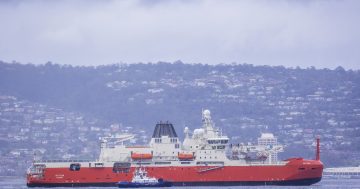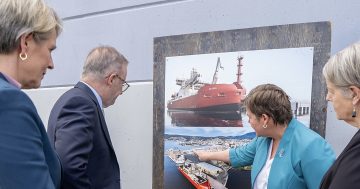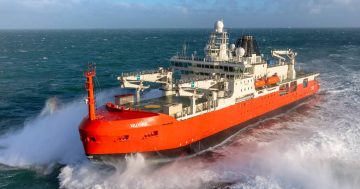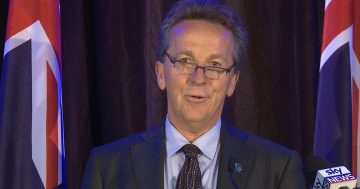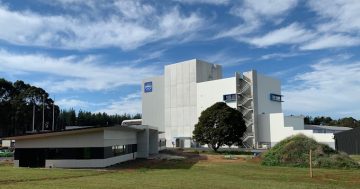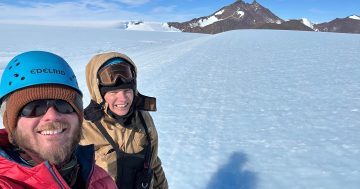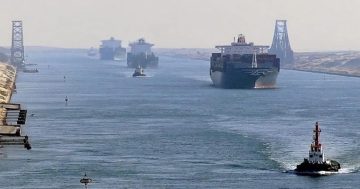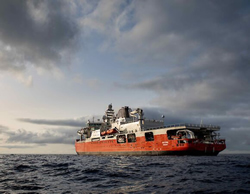 The Australian Antarctic Division’s (AAD) long-awaited Antarctic flagship has completed its maiden Southern Ocean voyage, docking in Hobart, Tasmania over the weekend (16 October).
The Australian Antarctic Division’s (AAD) long-awaited Antarctic flagship has completed its maiden Southern Ocean voyage, docking in Hobart, Tasmania over the weekend (16 October).
Director of AAD, Kim Ellis said planned celebrations to welcome the ship had to be delayed due to southern Tasmania’s COVID-19 lockdown, but the 160 metre-long, 50 metre-tall, bright orange icebreaker was impossible to miss as it sailed up the River Derwent.
Mr Ellis said he was excited and relieved to see this “Swiss Army knife” of Antarctic vessels arrive home after a 24,000-kilometre, 47-day voyage from the Netherlands.
“After 10 years of planning, design and construction, to see Nuyina enter its home port is truly an historic moment,” Mr Ellis said.
“However, this is only the beginning of the journey for Nuyina,” he said.
“It will now embark on a period of further commissioning and ice trials, before it officially launches in to 30 years of service to the Australian Antarctic Program.”
Mr Ellis said the ship had been under construction in Romania since 2017, before moving to the Netherlands for final fit-out and testing in 2020.
The AAD Director said Nuyina, pronounced noy-yee-nah, meant “southern lights” in palawa kani, the language of Tasmanian Aborigines.
Chief Scientist at AAD, Nicole Webster said the ship had exciting capabilities for scientists.
“We’ve been describing her as Disneyland for scientists,” Professor Webster said.
“She comes absolutely bristling with sensors that are really going to act like eyes and ears and they can collect mountains of data in real-time, so things like echo sounders that help us locate fish populations and krill swarms,” she said.
“It has hydrophones that can listen in on marine mammals and whales and seals; it has underwater cameras that allow us to see into areas of the Southern Ocean that we’ve never been able to see before.”
The AAD Chief Scientist said the ship would collect oceanographic and atmospheric data.
“It enables us to do things like artificial intelligence, we can track individual whales and then use some of those data streams to predict where those whale populations might be, so it’s really going to transform our future science capabilities,” Professor Webster said.


